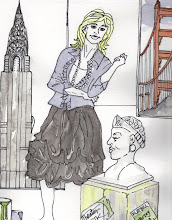Had it not been very late on a moonless night when I stepped across the threshold at the Bavarian house for the first time, I know I would not have missed the writing in chalk over the door. As it were, I did not truly see the outside of the house until the next day, when I ventured out, where I stood relishing the warmth of the sun and enthusiastically inhaling air freshly scrubbed by a nighttime storm from the Alps. After testing my legs during a brief walk on the cobbled streets of the Markt, I found my way back to the house and where I came to an abrupt halt.
For many people, white chalk conveys happy thoughts. Childishly drawn hop-scotch boxes. Sidewalk chalk art contests. Enticing specials of the day written in tidy script on sandwich boards in front of quaint restaurants. At the right age, getting to be the envied cleaner of a classroom chalkboard. The white cliffs of Dover. Other chalky memories may not be so pleasant. What university freshman – trying to blend like a chameleon into the dark oak seats of an ancient auditorium – has not suffered while a hard-of-hearing professor nearing emeritus status inadvertently drew a piece of chalk across a slate surface at the just the perfect angle to create an agonizing screech? Or, for instance, who has not come suddenly upon a star and circle pentacle sign surreptitiously scrawled behind the bathroom door when visiting a relative? Well then, lucky you.
Staring at the chalky writing over the door, my first thought was to wonder who had lived in the house before we moved in. My second thought was to wonder if there were any lingering, shall we say, emanations.
+
20 + C + M + B + 09
Probably an algorithm some carpenter feared he’d forget lest he write it down immediately. Like the phone number that you repeat over and over until, at last, you find paper and pencil. Harmless. Endearing, even, as only the absent-minded sometimes are. Must write it down. Imagine Mr. Magoo with Altzeimer’s.
The next day, I cheerily followed the winding streets into the Altstadt, the old town. My brain eventually grew used to the colorful house-fronts edging the narrow streets and the lexicon of hanging wrought-iron signs indicating the shop trades. The gradual familiarity let me begin to pick out details, like what happens when you twist your camera lens aperture for a close up. Emulating Hansel & Gretel deliriously following their breadcrumbs, I began to pick out chalk letters and numbers everywhere in the village. Here, written across the middle of the Bäckerei (bakery) door. There, written on the top rail over the door to Apotheke, the drugstore. And at my feet, on a polished granite lintel placed incongruently among the headstones-to-be-engraved at the stone memorial workshop, apparently awaiting eventual placement in some prestigious - or sanctified - spot.
In my jet-lagged clarity, I decided the numbers must be part of a surveying project. My truly flimsy theory fell away when I saw that the very same number 20 + C + M + B + 09 appeared everywhere in the tiny town. After a few days of sleuthing, I had ranged further afield and saw that only the first number changed, if that. And in the dusky depths of a restored cathedral, I discovered the chalk inscription on an interior door. Okay, so not-a-surveyor’s-mark.
A few cursory search attempts on my laptop didn’t solve the mystery. I had begun to feel like the Klinsky family in Manhattan whose playful architect, Eric Clough, unbeknownst to them, embedded a scavenger hunt into his renovation of their 5th Avenue apartment. For months, the bemused family stumbled on ciphers, secret doors, mazes, puzzles, and games until the creative (and, let’s guess, well entertained) architect at last owned up. Still bedeviled, I tried yet another internet search; my life was illuminated by Flickr and I fell to my knees in front of a posted photo of a priest blessing a house - in Bavaria, no less. The priest had, the caption read, just used the blessed chalk (Who knew?) to write an inscription intended to bless all those who entered and departed through the door. God bless Google.
Like in any good code, the letters in the inscription can have more than one meaning. I learned that the letters C, M, and B are the initials of the traditional names of the Three Magi: Caspar, Melchoir, & Belthasar, and also abbreviate the Latin words Christus mansionem benedicat, which means “May Christ bless the house.” The plus signs are intended to be crosses representing the blood of Christ and the holiness of the magi. So far, we have C + M + B. This christening of the home occurs during the month of January and is a nod to the Roman God Janus, whom some of you may recall is the doorkeeper to Heaven and the beginning and end of things (quite a lot to be responsible for, at the end of the day - or the end of time, whichever came first for Janus). The initial number indicates the day in January when the blessing was given. The ending number is the year which, given that the inscription is written in chalk, hardly seems necessary. Since I never saw any cross-outs of previous years, it seems reasonable that at some point, probably on the German equivalent of Boxing Day, that the evergreen swags hanging over front doors come down, and a very special (perhaps even blessed) sponge (one might guess, sated with Holy Water) is used to make a clean slate, ready, as it were, for the new year’s Epiphany inscription. Last - and this may help me overcome any disfavor I feel toward chalk - the inscription, in its entirety 20 + C + M + B + 09, is written in chalk since chalk - being of the earth - represents Christ in human form. This last part probably accounts for the additional cross sometimes written over the letter M - a crowning cross, it would seem.
Upon reflection, given the range of house blessings practiced the world over, I considered myself lucky. And I thought that the Klinskys should be grateful, too, that the distinguished Mr. Clough was not enamored with the Moroccan manner of house blessings, whereupon small animals are ritually sacrificed and walled up in the new construction. Singularly, such a practice could hasten the speed (given most months in Morocco can be quite warm) at which an impromptu house-warming scavenger hunt shapes up.
Subscribe to:
Post Comments (Atom)








No comments:
Post a Comment